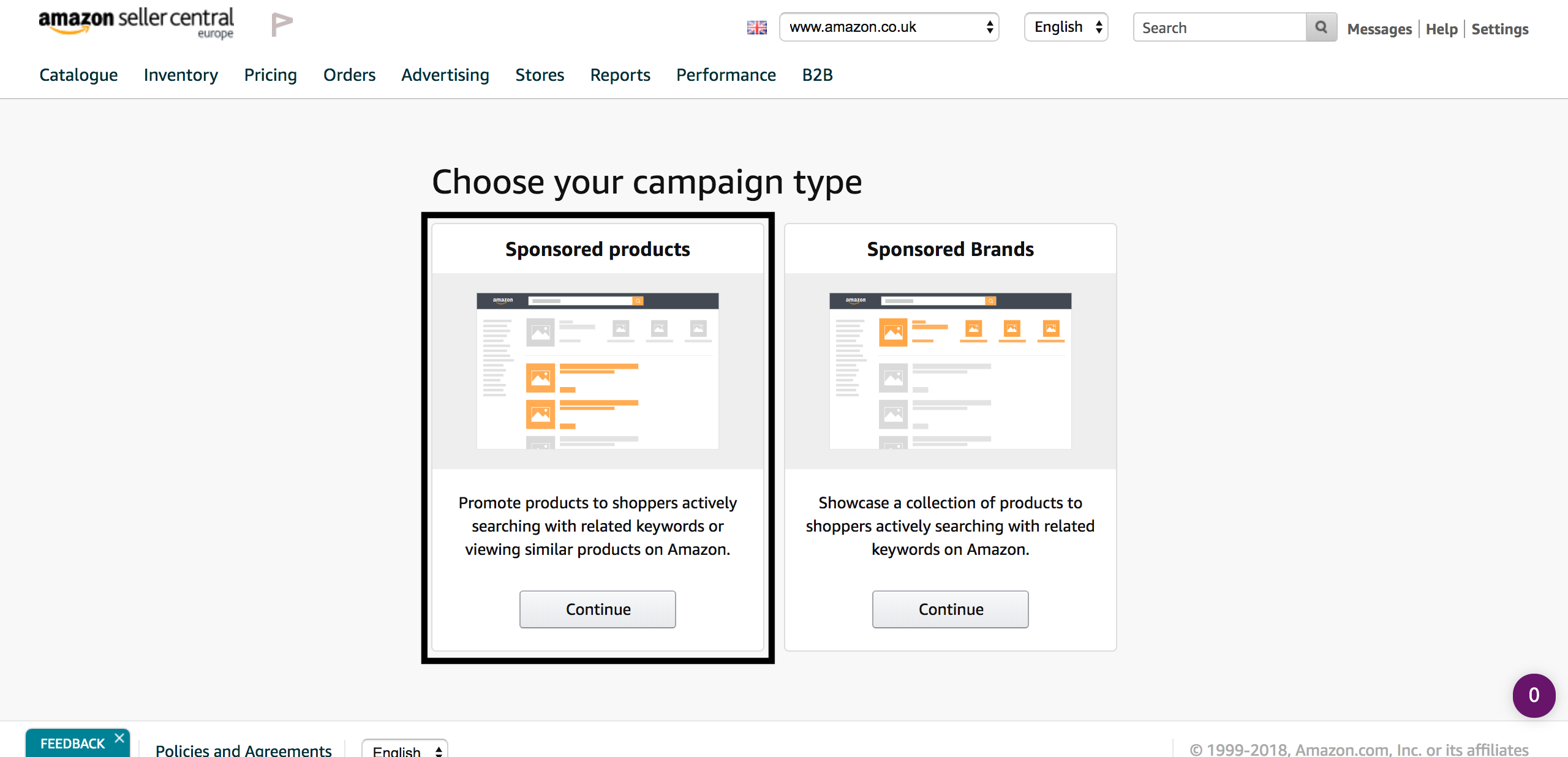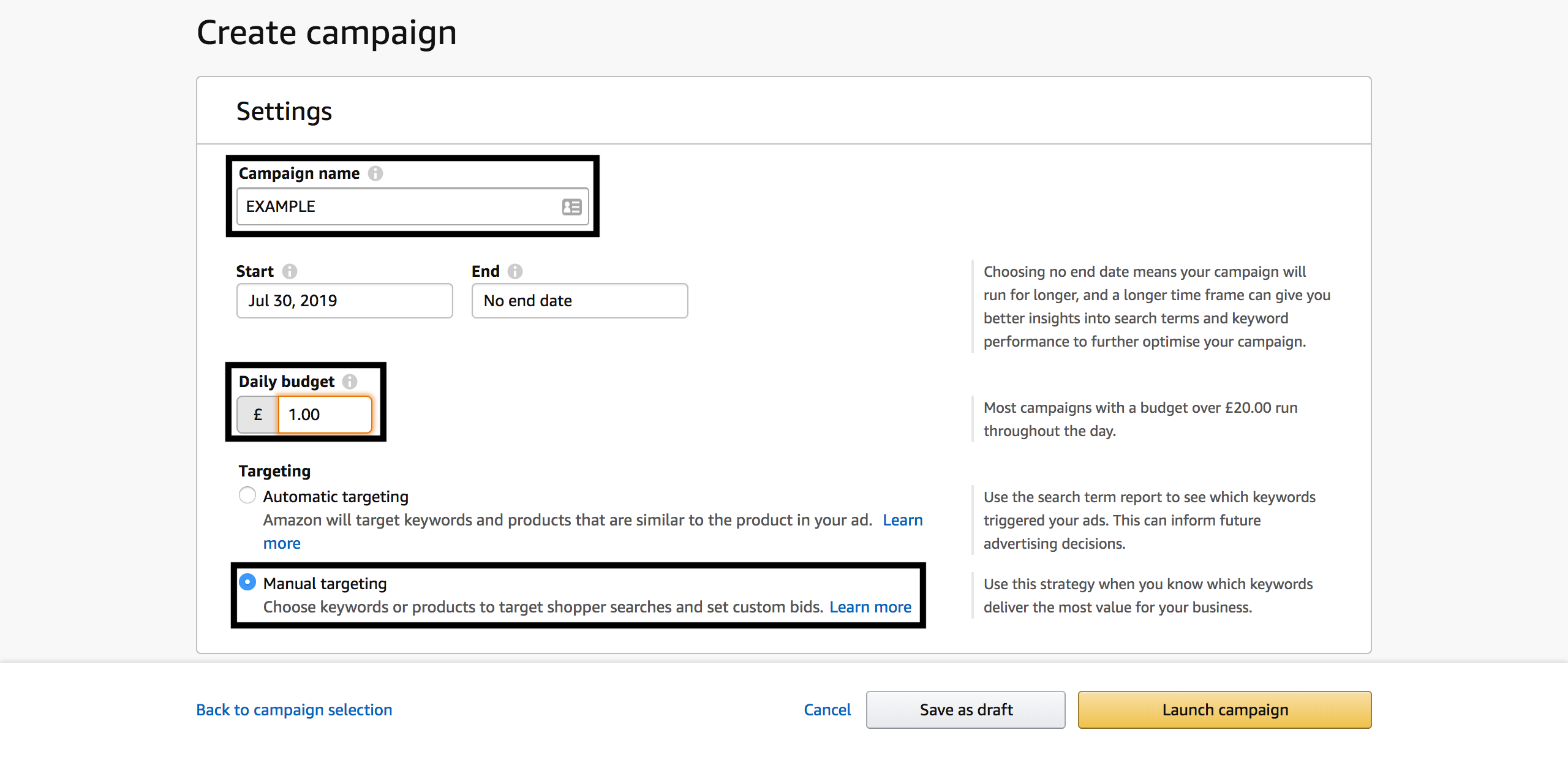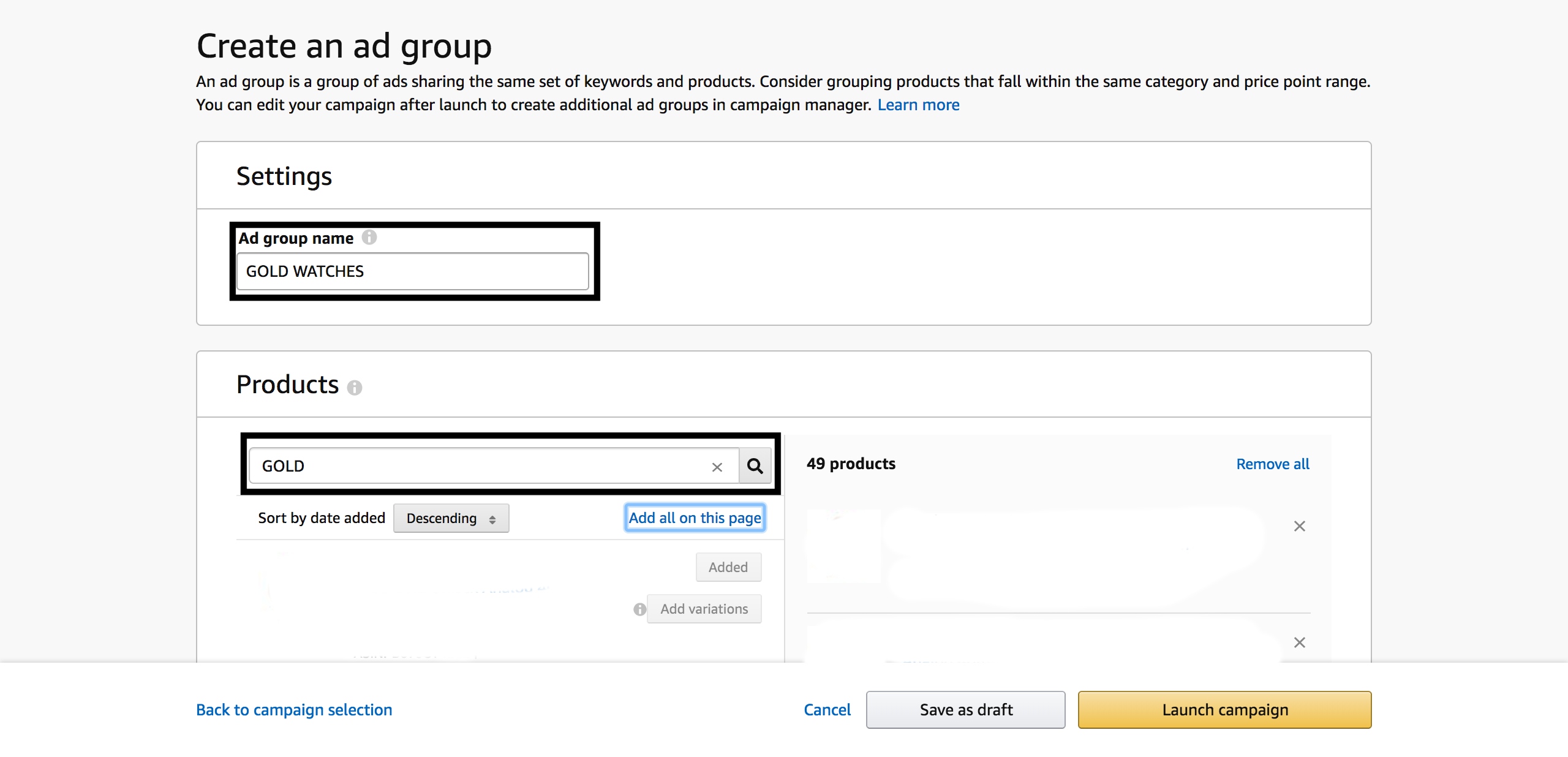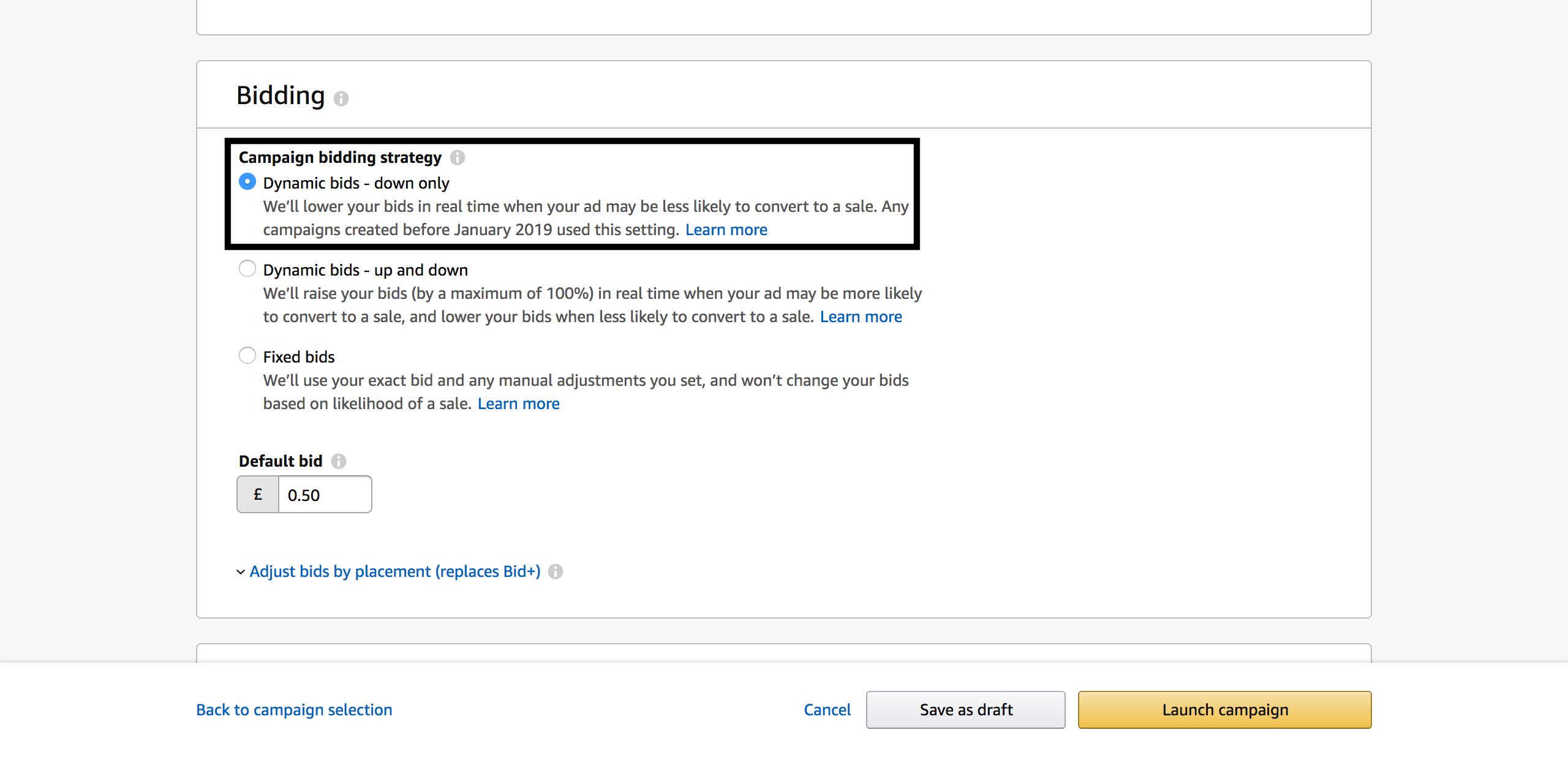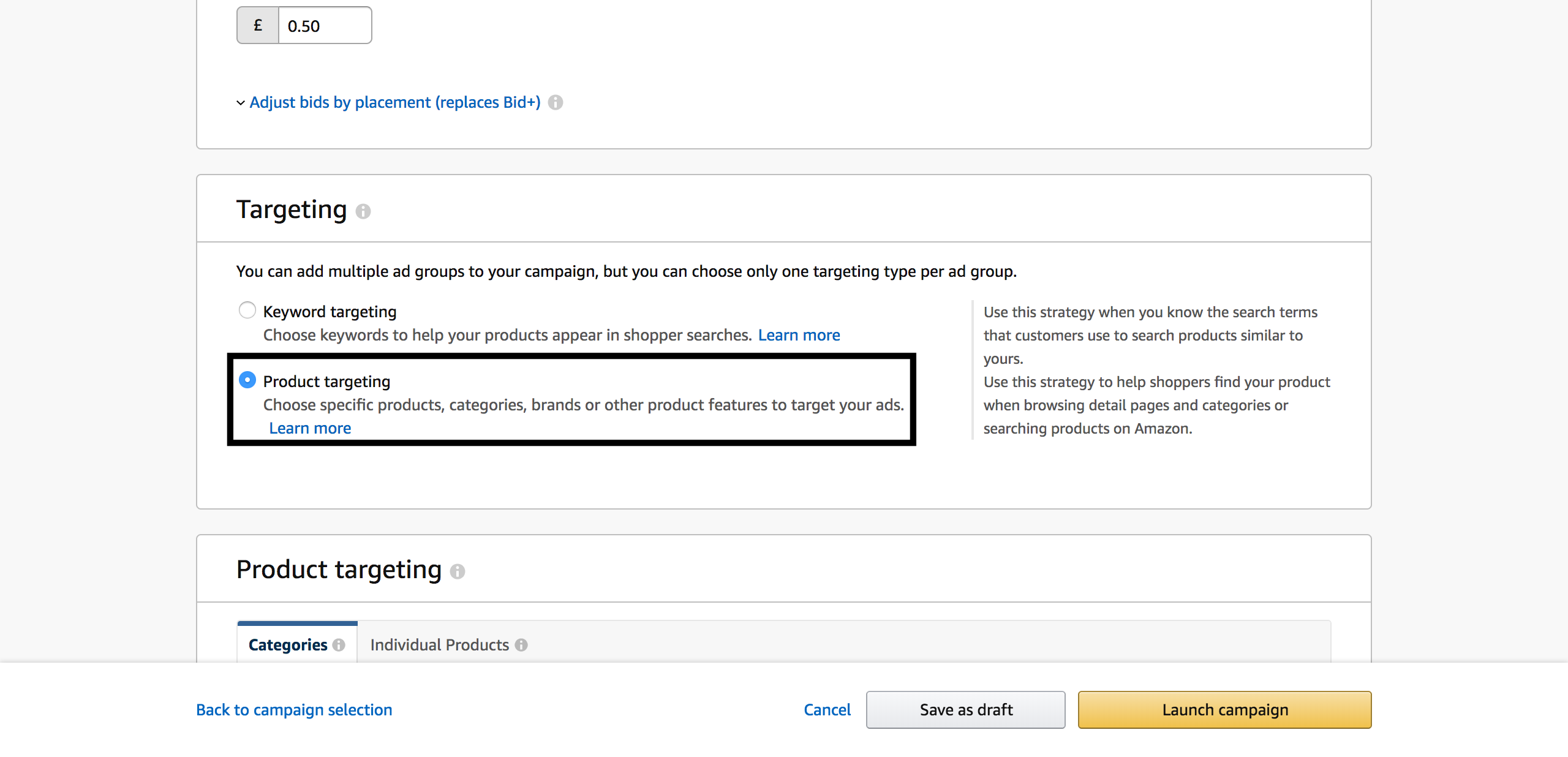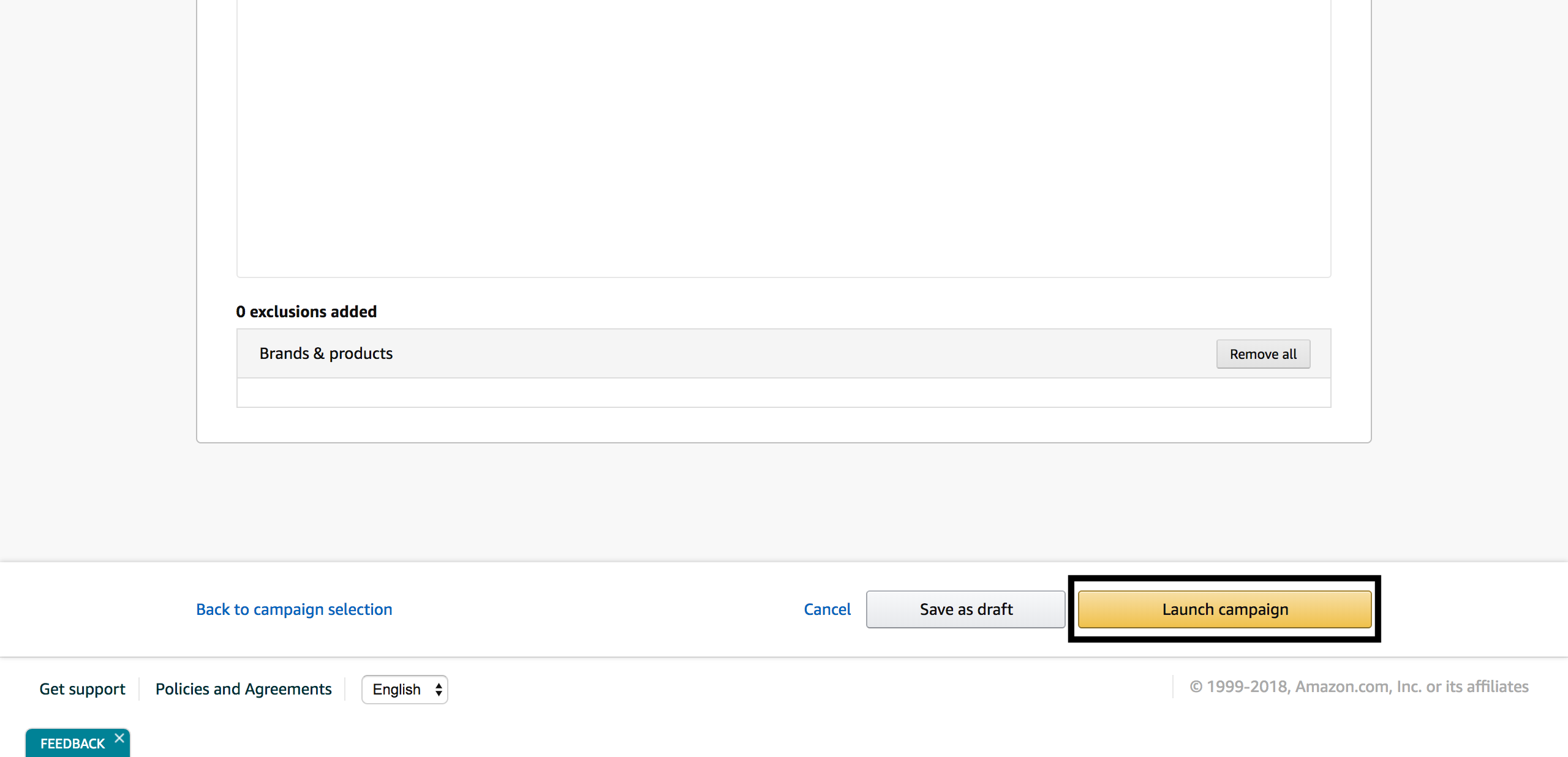In order to run a successful Amazon PPC campaign, you will want to make sure you cover all of the basics when setting it up. One of the most commonly forgotten campaign types is a Product Targeting Campaign. This type of campaign was introduced to the Amazon world to help sellers reach their potential customers in a whole new way. Essentially, product targeting allows you to target the exact ASIN or category of your choosing. Setting up one of these campaigns for your Amazon PPC campaign will prove to help target a more relevant audience for your product.
What is Product Targeting?
What is it? Exactly what it sounds like! Thanks to optimized features on Amazon Seller Central, you will now be able to reach a more relevant audience through product targeting. For manual campaigns only, this type of campaign will allow you to target by ASIN or product category. ASIN stands for, Amazon Standard Identification Number and is used just for that, identification of all products in their catalog. Through using specific ASIN numbers, you are able to target specific products for specific ad groups. You are also able to target specific product categories that you think your product would fall under.
For example, you sell all types of running shoes and your company has just come out with a new purple variant of running shoes. Through product targeting, you can now target the specific purple running shoes ASIN, so ads for your product will appear in relevant user searches. In terms of product categories, if you are still selling running shoes, a category you may want to target could be athletic shoes.
Why Use It?
There are many benefits to using Product Targeting, but the main advantage is how much it can potentially save you in terms of cost. If utilized correctly, this campaign should only advertise to relevant users. This means you will be wasting less of your money on customers who have no interest in your product. In short, it is just a great method in optimizing your current overall Amazon PPC campaign.
How Does It Work?
Similar to automatic campaigns, Product targeting campaigns use no keywords. This type of campaign is also almost as simple to set up. While going through the process of setting this campaign up, you will be able to refine your targeting by specific brands, price range, star ratings, and Prime shipping eligibility. All of these refinements will enable you to reach your more relevant audience,
Want to learn how to set one up for yourself? Read below to see the steps you can take to get started!
1) Log Into Your Amazon Seller Central Account
Once you are logged into your account, you will want to hover over the Advertising tab, click on Campaign Manager once the drop-down menu appears.
2) Create a New Campaign
You will want to create an entirely new Sponsored Product campaign for Product Targeting. This will help you keep your other campaigns separate and organized, avoiding confusion and clutter is key.
3) Settings
Once you have created your campaign you will want to fill out the Settings section of creating a campaign. This can be done at your discretion, but we will include some tips if you are unsure as to how to fill this section out.
- Name the campaign so that it is easily identifiable, make sure you can tell what kind of campaign it is without having to open the campaign.
- Don’t include an end date unless you know when you want your campaign to cease from running.
- Your budget is up to you, as it can be different for every company in every marketplace
- Set your targeting to Manual.
4) Create an Ad Group
In this section, you will want to name the first ad group of this campaign. We recommend naming it after the product you are hoping to target. Also, you will want to type in which product you want to target under the Products section.
5) Bidding Strategy
You will want to keep your bidding strategy at its default, Dynamic bids – down only. This means Amazon will lower your bids when an ad is less likely to convert.
6) Targeting
From here you will want to select Product Targeting rather than Keyword Targeting.
7) Product Targeting
If you filled out the Products section, which we recommend, there will be category suggestions based on the product you entered. For beginners, we recommend using the suggested categories with your own refinements.
8) Refinements
Filling out refinements can be done at your discretion, as each company will want to target different things. Once you are done filling out the refinements, click on Target.
9) Launch Campaign
Once you are done adding categories, you are officially ready to launch your campaign!
There you go! Not to difficult right? To keep this campaign running smoothly and successfully, make sure you check up on it very often. You will want to keep on eye on ACoS and how well your ad groups have been converting. If one is not performing, don’t be afraid to make some adjustments and optimizations. I hope this article was of some use for everyone! Feel free to drop any questions, comments or concerns in the comments below!
Good luck and happy trails!


